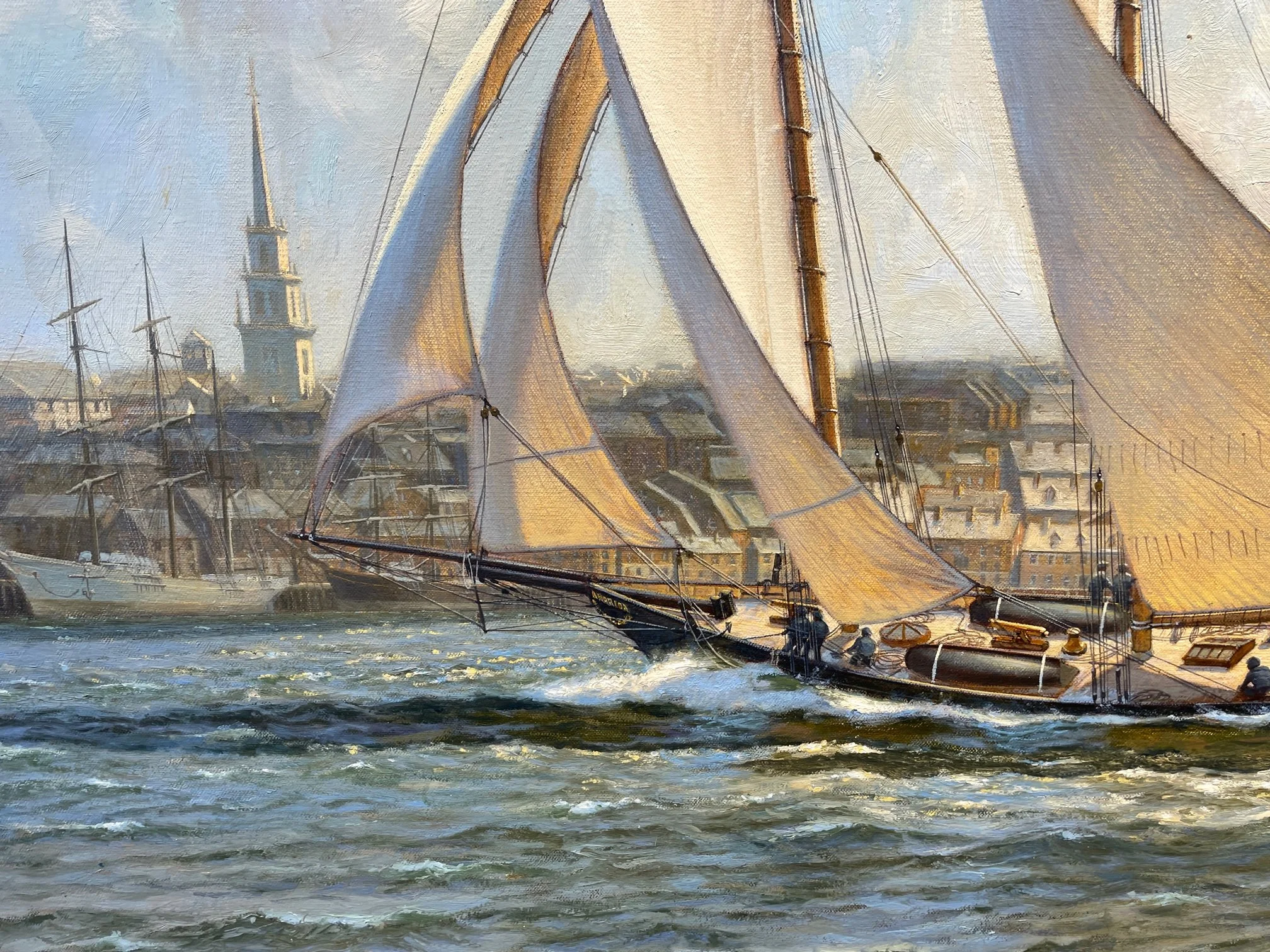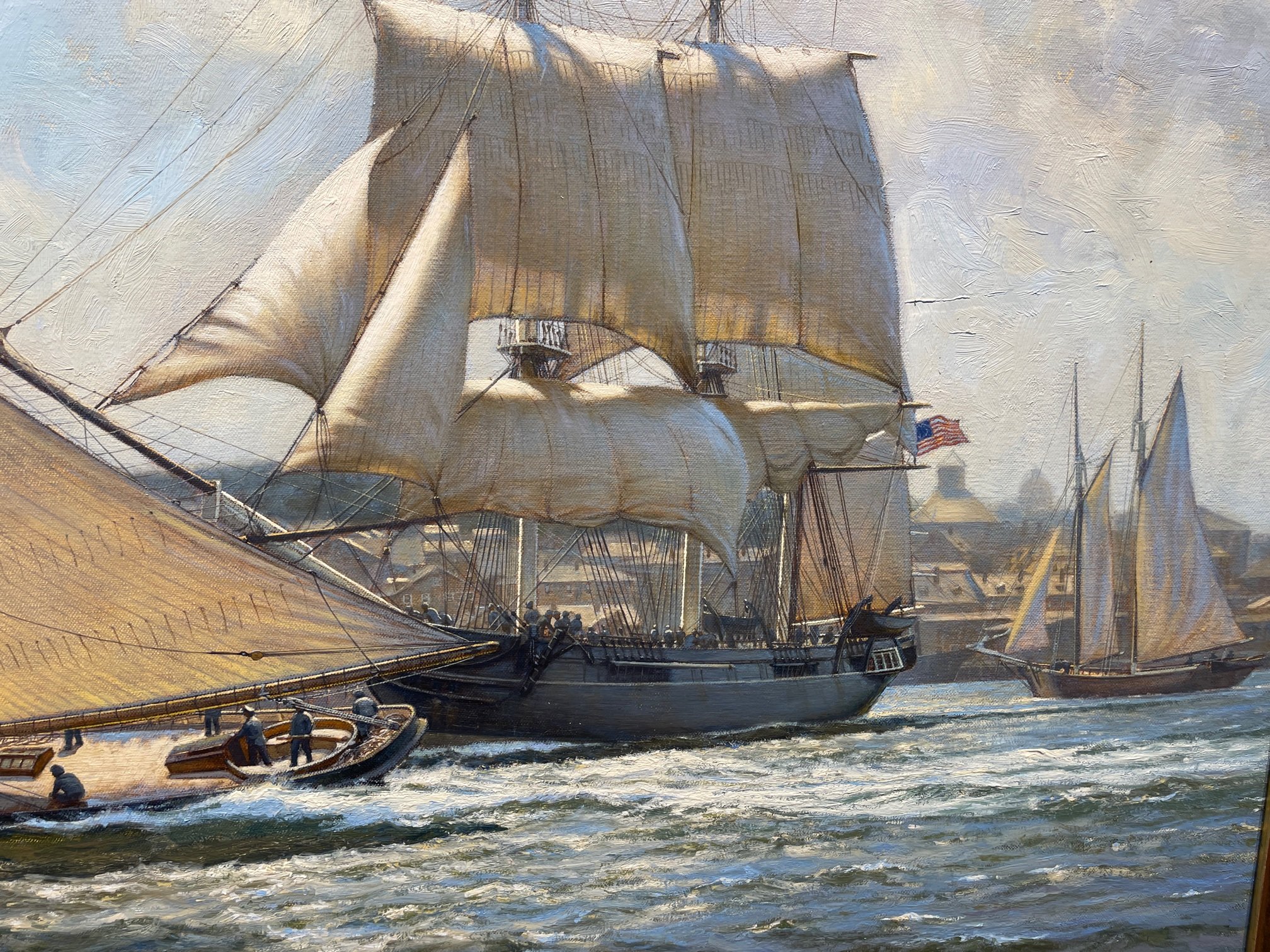Schooner Yacht America and Sloop of War Marion leave Boston in the Summer of 1863
oil, 30" x 40"
$55,000
It may come as a surprise to learn that the U.S. Naval Academy, founded in Annapolis, Maryland, in 1845, was not always located in Annapolis. In 1861 it was moved to Newport, Rhode Island, until the end of the Civil War in 1865 so that training of Naval Cadets could continue uninterrupted. It may also be surprising to learn that one of the Naval Academy's training ships of that time was the Schooner Yacht America, famous for winning the first America's Cup Race in 1851!
In 1863, America and the Sloop of War Marion visited Boston Harbor, as a part of a United States Naval Academy Cruise for training midshipmen. In this painting Schooner America, distinguished by her unique round cockpit, with all her sails pulling hard in the fresh breeze sails across the bow of sloop of war Marion, which was stationed in Newport along with the sloop of war Macedonian. Marion is still busy lowering her foresail and mainsail and hoisting one of her jibs. She is sailing under a reduced rig with no yards "crossed' on the topmast sections. On board America can be seen the 24 pounder Dahlgren deck guns that she carried to apprehend Confederate blockade runners. Sections of her deck are wet from water splashing aboard. Crew are hauling in the jib sheet on the port side for'ard. A cloud casts a shadow on the foreground water but sunlight lights up the water around America. and Marion, and creates a wonderful glow through America's cotton sails.
The old North Church, in the background is also sunlit but a shadow passes over the buildings and ships along part of the waterfront Trees can be seen on Cropp's Hill, behind the Marion. On the right-hand side, a schooner's sails flap as she tacks. She has furled her jib in preparation for anchoring. America had an interesting history after her triumph in 1851. Se won a number of regattas until 1856, when she was purchased by Henry Upton, Viscount Templeton, who changed her name to Camilla.
She was sold several times again, and in 1861 sailed as Camilla from Savannah, Georgia to England on a mission for the Confederates. America was next heard of when she was found scuttled by the Confederates in Dunn's Creek approximately 70 miles up St John's River from Jacksonville in March 1862. Thomas H. Stevens, a Lieutenant in the Union Navy, found her, raised her and she was taken to Port Royal, South Carolina where she was dried out, masts re-stepped and she was put to blockade duty. near Rattlesnake Shoal, Charleston from June 1862 to March 1863. She captured or forced ashore three Confederate blockade runners during that time. Next, she was ordered to Newport, Rhode Island, to serve as a training Ship. America remained in the Navy until 1873. when she was sold to Benjamin Frank Butler. The sloop of war Marion was a small ship-rigged warship carrying guns on her spar deck only. Five sloops were built in 1839 (one in Boston) with the Dale lasting until 1905. “As a general characteristic, small American Naval vessels suffered from being over sparred, over gunned and over canvassed.” (Quoted from Howard I. Chapelle- ‘The History of the American Sailing Navy’).
Painting Detail
Painting Detail



